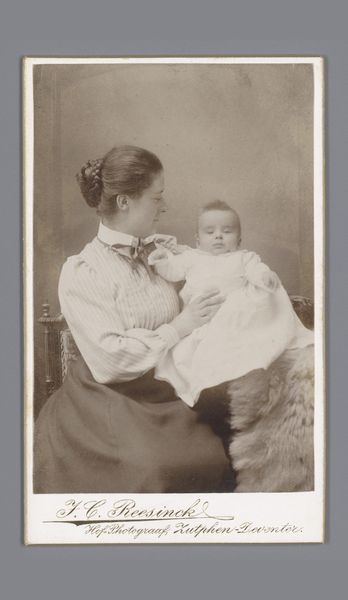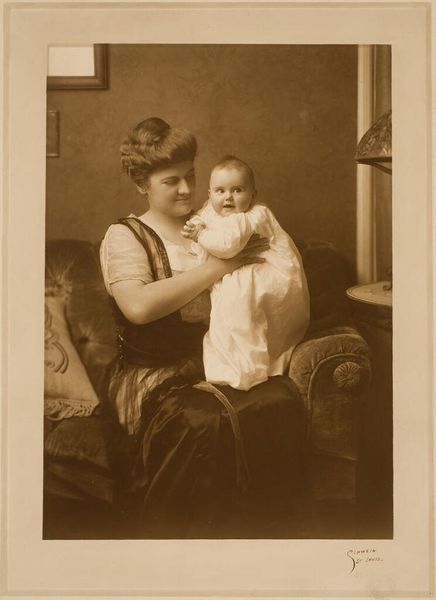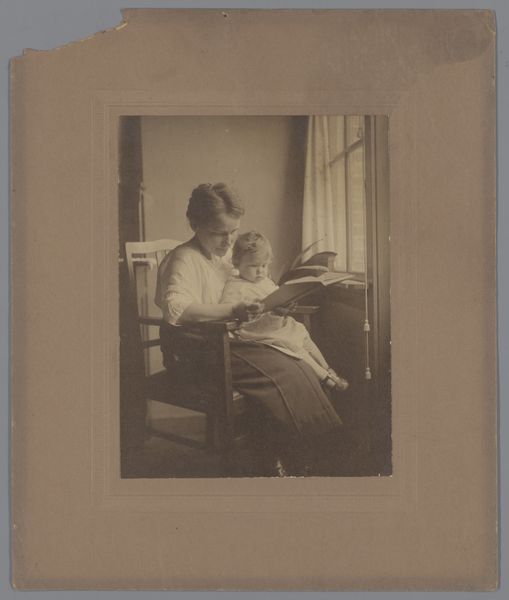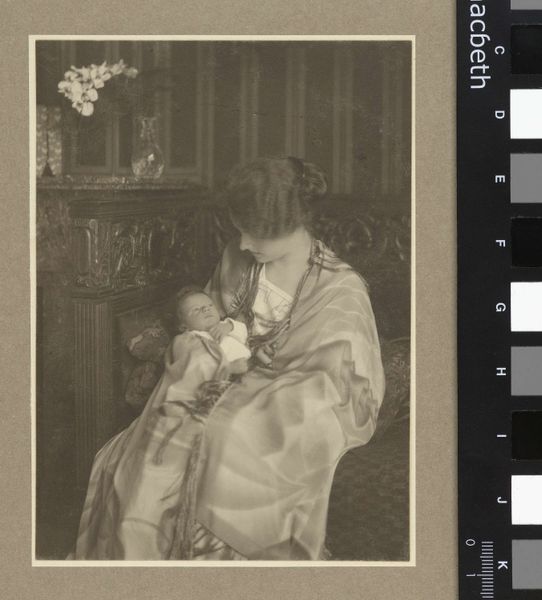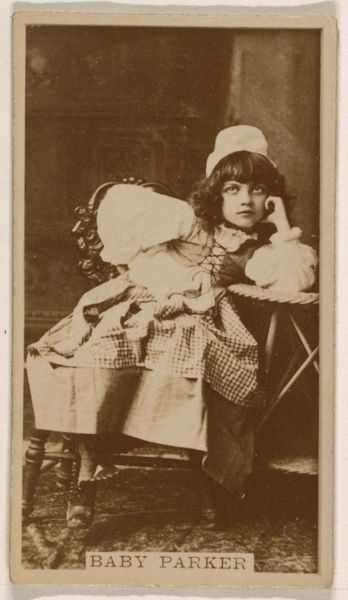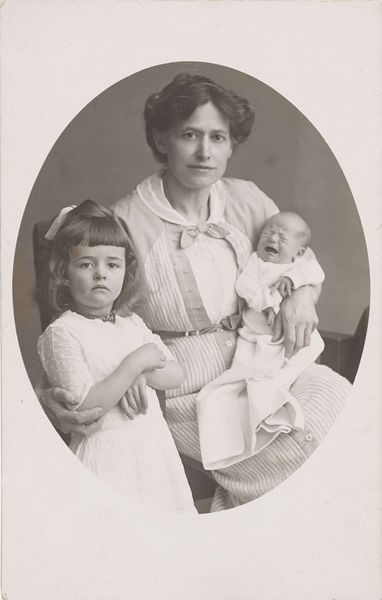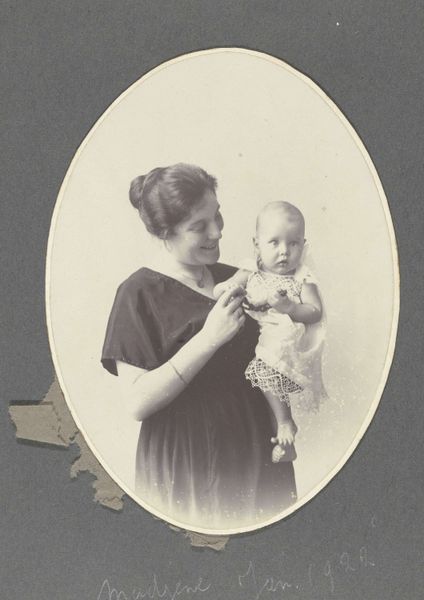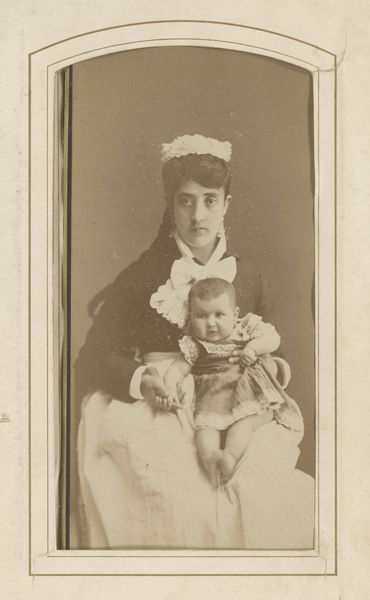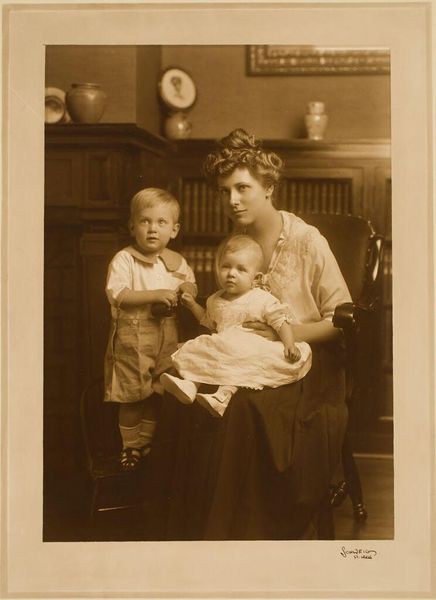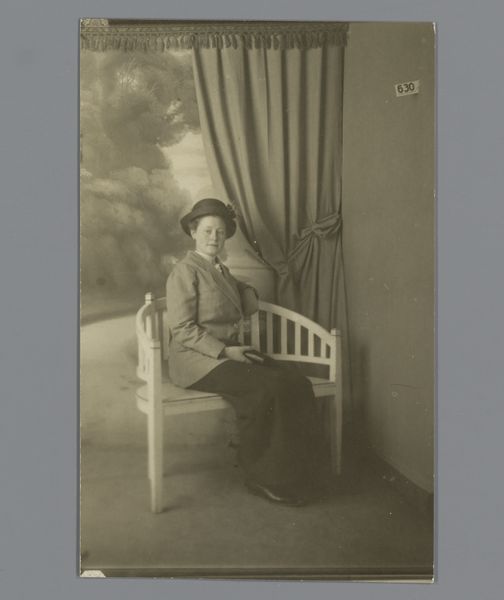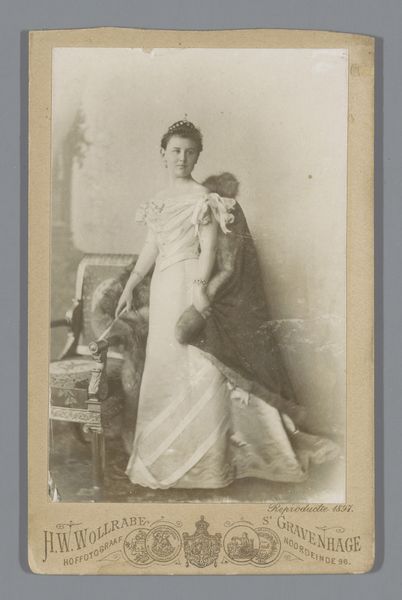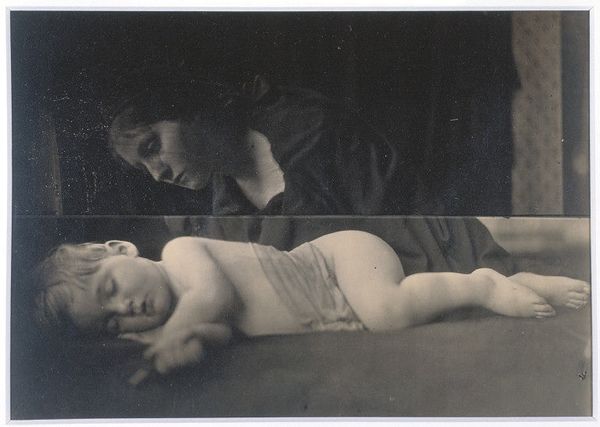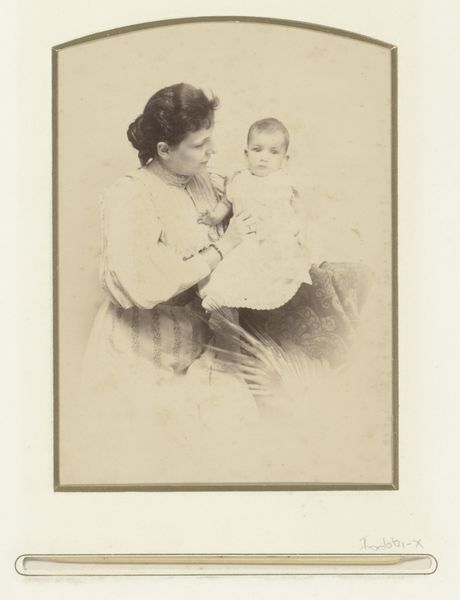
'Undernurse' Daisy met Dorothée, de jongste dochter van de fotograaf, op schoot Possibly 1910 - 1916
0:00
0:00
print, photography
#
portrait
#
print photography
# print
#
photography
#
historical photography
#
realism
Dimensions: height 163 mm, width 121 mm, height 194 mm, width 143 mm
Copyright: Rijks Museum: Open Domain
Editor: Here we have "Undernurse' Daisy met Dorothée, de jongste dochter van de fotograaf, op schoot" by Henry Pauw van Wieldrecht, likely from between 1910 and 1916. It's a historical photograph of a woman holding a baby. The scene is very domestic and intimate. What do you see in this piece? Curator: This photograph opens up so many questions about the construction of motherhood and class at the turn of the century. Consider the title; the term "undernurse" implies a division of labor, a privilege afforded by wealth. We see this woman, presumably the undernurse, carefully holding the child, but the composition subtly highlights a social hierarchy. Editor: I hadn’t thought about the title that way. So, it's not just a sweet scene, but also about labor and class. Curator: Precisely. Who gets to nurture and mother, and under what conditions? Note the setting, too – likely an upper-class home, meticulously arranged. This domestic space is itself a performance of social standing, isn't it? Consider how the composition is arranged: the gaze of the undernurse toward the child and the setting can be interpreted. This image could open up a discussion about gendered expectations, reproductive labor and even eugenics, and it demands an intersectional perspective. What does realism mean in this context? What does this tell us about power, not only through how motherhood and family were constructed at this historical moment but what it meant to the sitter and the artist, and the viewer looking at this now? Editor: It's fascinating to consider it in that context. I initially saw only a quiet moment, but now I realize it reveals so much about social dynamics. Curator: Exactly. Art isn’t created in a vacuum; it’s a product of its time, reflecting and reinforcing societal norms, even in something as seemingly simple as a portrait of a caregiver and child. Editor: I learned a lot from that analysis; it encourages me to look beneath the surface of the artworks! Curator: Agreed, and never take any representation at face value, always question!
Comments
No comments
Be the first to comment and join the conversation on the ultimate creative platform.
